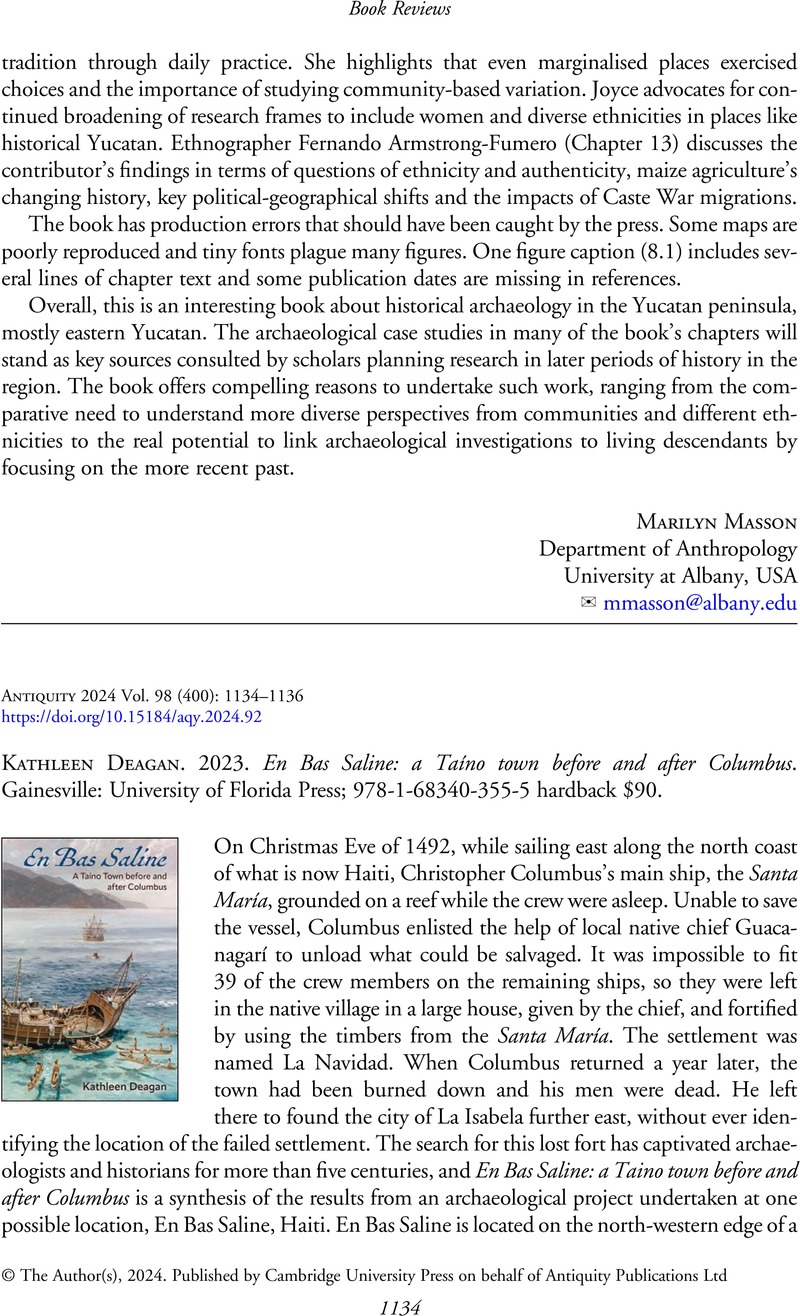No CrossRef data available.
Kathleen Deagan. 2023. En Bas Saline: a Taíno town before and after Columbus. Gainesville: University of Florida Press; 978-1-68340-355-5 hardback $90.
Review products
Kathleen Deagan. 2023. En Bas Saline: a Taíno town before and after Columbus. Gainesville: University of Florida Press; 978-1-68340-355-5 hardback $90.
Published online by Cambridge University Press: 12 September 2024
Abstract
An abstract is not available for this content so a preview has been provided. Please use the Get access link above for information on how to access this content.

- Type
- Book Reviews
- Information
- Copyright
- Copyright © The Author(s), 2024. Published by Cambridge University Press on behalf of Antiquity Publications Ltd


